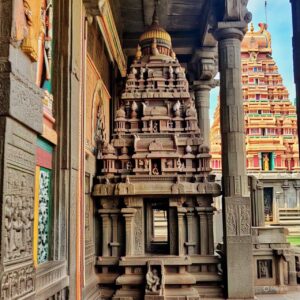
South India is a land of ancient traditions, rich culture, and divine heritage. With thousands of temples, each more magnificent than the other, the region offers a deeply spiritual experience. From towering gopurams to sacred rituals, the Temple Trails of South India take you on a journey through time, faith, and devotion.
Whether you are a pilgrim, a culture lover, or a curious traveler, exploring South India’s temples is an unforgettable experience. Here’s a guide to the most iconic temples, what to expect, and the best time to visit.
Why Choose Temple Trails in South India?
South India is home to some of the oldest temples in the world. These temples are not just places of worship, but also architectural wonders. The intricate carvings, massive temple towers, and spiritual rituals draw millions of visitors every year.
Keywords: temple trails South India, famous temples, South India pilgrimage, spiritual travel India, temple architecture India
1. Madurai Meenakshi Temple – Tamil Nadu
The Meenakshi Amman Temple in Madurai is one of the most famous temples in India. Dedicated to Goddess Meenakshi and Lord Sundareswarar (Shiva), the temple complex has 14 towering gopurams adorned with thousands of colorful sculptures.
Things to Do:
-
Attend the evening aarti.
-
Explore the temple’s art and sculptures.
-
Visit the Thousand Pillar Hall.
Best Time to Visit: October to March
2. Brihadeeswarar Temple – Thanjavur, Tamil Nadu
A UNESCO World Heritage Site, this Chola-era temple is dedicated to Lord Shiva. Built in the 11th century, it is a masterpiece of Tamil architecture. The massive stone Nandi and the towering vimana (temple tower) are major attractions.
Things to Do:
-
Witness the stunning Dravidian architecture.
-
Explore Chola murals and inscriptions.
-
Visit during temple festivals.
Best Time to Visit: November to February
3. Rameswaram Temple – Tamil Nadu
Located on an island, Rameswaram is one of the Char Dham pilgrimage sites. The temple is known for its long corridors, sacred wells, and connection to the Ramayana.
Things to Do:
-
Take a dip in the 22 holy wells.
-
Visit the Ramanathaswamy Temple.
-
Explore nearby Dhanushkodi Beach.
Best Time to Visit: October to April
4. Srirangam Ranganathaswamy Temple – Tamil Nadu
This is the largest functioning Hindu temple in the world. Dedicated to Lord Vishnu, it spans 156 acres and features a 236-foot tall gopuram. The temple town is sacred to Vaishnavites.
Things to Do:
-
Participate in Vishnu Sahasranama chanting.
-
Attend the Vaikunta Ekadasi festival.
-
Explore ancient mandapams and shrines.
Best Time to Visit: December to March
5. Tirupati Balaji Temple – Andhra Pradesh
Also known as Sri Venkateswara Temple, this is one of the most visited religious sites globally. Located atop the Tirumala hills, the temple is famous for its laddu prasadam and daily rituals.
Things to Do:
-
Offer prayers to Lord Balaji.
-
Walk the spiritual footpath (Alipiri).
-
Try the free annadanam (temple meal).
Best Time to Visit: September to February
6. Lepakshi Temple – Andhra Pradesh
A hidden gem, the Veerabhadra Temple in Lepakshi is famous for its hanging pillar and beautiful frescoes. It is a blend of Vijayanagara and Dravidian architecture.
Things to Do:
-
See the floating pillar.
-
Observe the intricate ceiling paintings.
-
Visit the monolithic Nandi statue nearby.
Best Time to Visit: October to February
7. Virupaksha Temple – Hampi, Karnataka
Located in the ruins of the Vijayanagara empire, the Virupaksha Temple is dedicated to Lord Shiva. It is an active temple with a history that dates back to the 7th century.
Things to Do:
-
Witness the temple elephant blessing devotees.
-
Explore the ancient ruins of Hampi.
-
Enjoy the musical pillars and murals.
Best Time to Visit: November to February
8. Chennakesava Temple – Belur, Karnataka
Built by the Hoysalas, this temple is a marvel of sculpture and craftsmanship. Every inch of the temple is decorated with intricate carvings depicting mythology and daily life.
Things to Do:
-
Marvel at the soapstone carvings.
-
Visit nearby Halebidu temple.
-
Learn about Hoysala architecture.
Best Time to Visit: October to March
9. Padmanabhaswamy Temple – Kerala
Located in Thiruvananthapuram, this temple is dedicated to Lord Vishnu. It is known for its Dravidian style, strict dress code, and hidden treasure chambers.
Things to Do:
-
Offer prayers in traditional attire.
-
Attend evening aarti.
-
Explore the nearby royal palace.
Best Time to Visit: October to February
10. Guruvayur Temple – Kerala
Guruvayur is one of the most important Krishna temples in South India. It is often called the “Dwarka of the South” and is famous for its traditional rituals and elephant sanctuary.
Things to Do:
-
Witness the early morning darshan.
-
Visit the Punnathur Kotta elephant camp.
-
Attend a temple wedding ceremony.
Best Time to Visit: November to February
Tips for Travelers on the Temple Trail
-
Dress Modestly: Traditional Indian attire is preferred in temples.
-
Follow Rituals: Respect local customs and avoid taking photos where restricted.
-
Stay Hydrated: South India can be hot; carry water and wear a hat or scarf.
-
Plan Ahead: Some temples have long queues; online bookings are available at places like Tirupati.
Best Time for Temple Trails
The ideal months for temple tours in South India are October to March. The weather is pleasant, festivals are in full swing, and temple rituals are vibrant.
Festivals to Experience
-
Navaratri in Madurai
-
Vaikunta Ekadasi in Srirangam
-
Rama Navami in Rameswaram
-
Utsavams in Tirupati
-
Elephant Festival in Guruvayur
Conclusion
South India’s temples are more than just spiritual sites—they are centers of culture, art, and history. A temple trail across the region offers a deeper understanding of India’s spiritual soul and architectural brilliance. Whether you are seeking peace, inspiration, or cultural insights, the Temple Trails of South India promise a life-changing journey.
